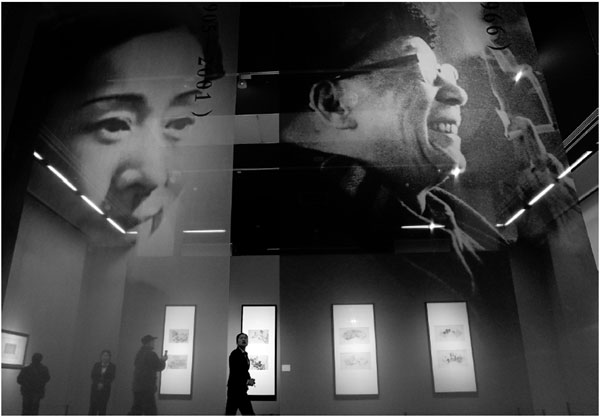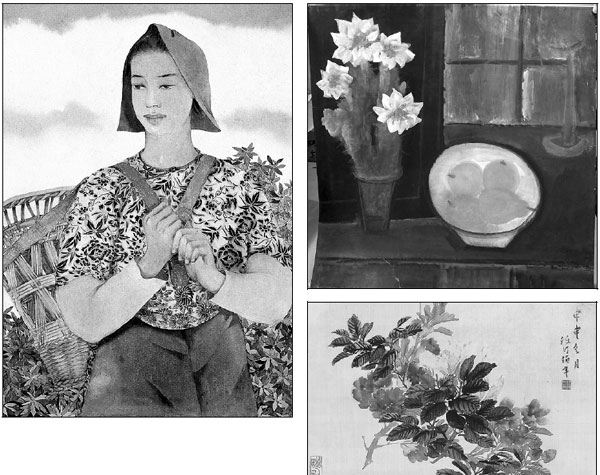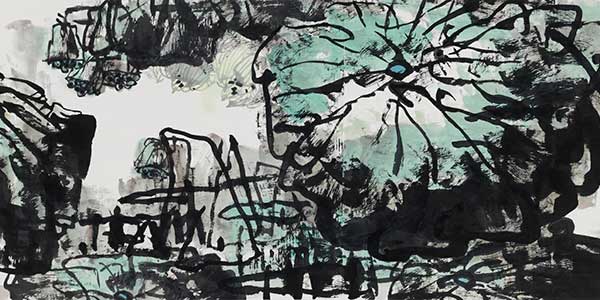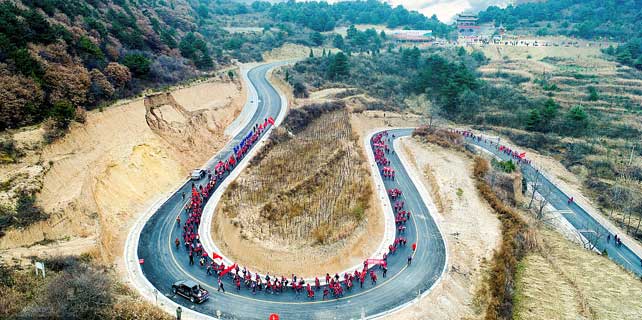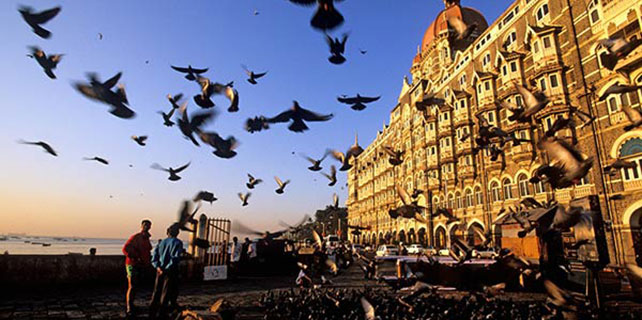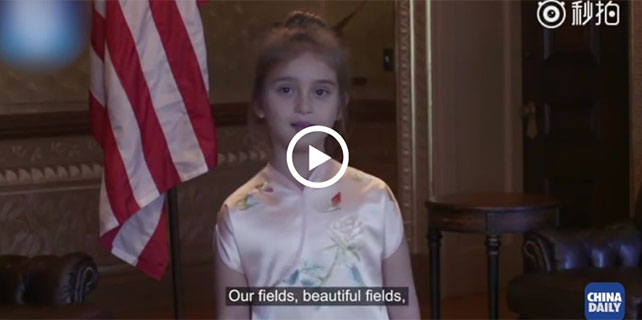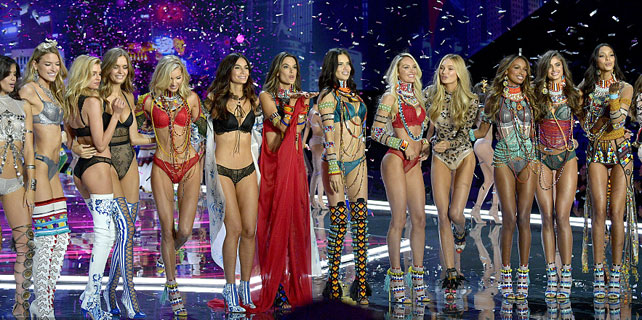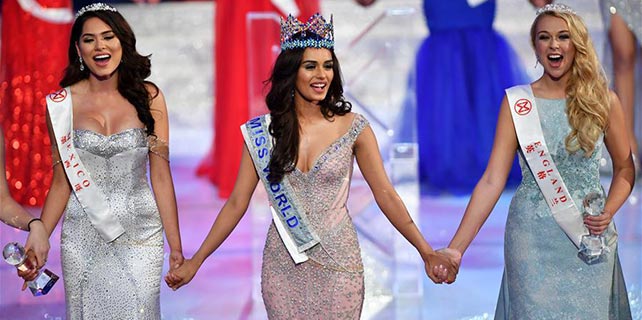Monitors of change
Beauty in the New Era, an exhibition at the National Art Museum of China in Beijing, displays works from the modernist revolution in Chinese art. Lin Qi reports.
For those who can afford it, owning expensive works of art is often viewed as a showcase for their wealth and an investment that may bring enormous returns.
On Wednesday, the price of the world's most expensive artwork soared to $450 million at a New York auction. This staggering sum was paid for Salvator Mundi, a painting attributed to the Renaissance master Leonardo da Vinci.
The buzz created by this will die down, and people will again focus on the eternal charm of art and the uncommon spirit of artists, which are what appeal to most people rather than the monetary value of an artist's work.
This is the sentiment that has motivated Beauty in the New Era, an exhibition on at the National Art Museum of China in Beijing, through Sunday.
On display are more than 200 paintings and calligraphic works from the museum's collection, through which one can look back on the modernist revolution of Chinese art. This began in the late 19th century and proceeded throughout the 20th century.
And it is a masters' show. The 14 artists featured at the exhibition made progressive endeavors to rejuvenate Chinese painting during the clash of Eastern and Western cultures. Each of them generates pages in any book on the history of modern Chinese art.
Some of them demonstrate their creativity through the traditional Chinese medium of ink paintings. These include He Shaoji who is recognized as the top calligrapher of the Qing Dynasty (1644-1911) and Zhao Zhiqian whose artistic style anticipated the establishment of the Haipai (or Shanghai) School of Painting. Works by the school's forerunners such as Ren Bonian and Wu Changshuo are also exhibited.
Their works are an exploration of how to modernize Chinese art traditions, so they embrace the diverse interests of the emerging middle-class in the city at that time.
Works on display include paintings by Qi Baishi, Fu Baoshi and Li Keran, which mark their breakthroughs in integrating Western styles in the three major genres of classical Chinese ink painting - flower and bird, mountain and water, and figures.
Other artists, such as Lin Fengmian and Xu Beihong, represent a generation who studied in Europe, were exposed to contemporary vanguard movements and brought an avant-garde view back to China. They were adept at both ink and oil paintings.
Some of the works are being shown for the first time, such as Geese, an ink painting by Xu Beihong who heralded the realism school in 20th-century Chinese art.
Xu is long admired for his depiction of horses, symbolizing the national spirit. The 1935 work, Geese, shows another subject Xu excelled at - one that he is less well-known for. His relaxed lines and shading lend grace and charm to a group of commonly seen domestic fowl in this work.
The exhibition occupies six halls at the National Art Museum of China. One of them is dedicated to the works that were once in the joint collection of Lao She (1899-1966), a significant novelist and dramatist, and his wife, Hu Jieqing.
They were donated to the museum, along with dozens of other paintings and calligraphic pieces, by their children two years ago.
The couple befriended several painters shown at the exhibition.
"Lao She not only collected, but also commented on art," says his son, Shu Yi.
"He wrote a series of articles critiquing almost every great painter of his time. He spoke highly of their achievements but also pointed out their shortcomings."
The couple often hung their collection on one wall of their sitting room. And they invited friends to come and appreciate them. From time to time, they would rotate the paintings. People called the wall, the "Lao She Gallery".
Now the National Art Museum of China has re-created the "Lao She Gallery", and people can share the writer's cultural tastes and also pay tribute to a true connoisseur.
The best works of the best artists are both precious and rare and therefore very expensive in a booming art market, says Wu Weishan, director of the National Art Museum of China.
"After seeing these masterpieces, some people will stop me and ask, 'How much are they worth?' I can only answer, they are priceless," he says.
"These artists do not get their share when their works fetch high prices at market. They worked because of their sense of responsibility to their art and the people. And it is our responsibility to pay them respect by sharing their art with as many people as possible.
"They are the peaks that generations will continue to look up to and admire."
An Yuanyuan, the museum's deputy director, says the works will continue to be shown in rotation on the sixth floor, as part of the museum's permanent display.
Contact the writer at linqi@chinadaily.com.cn
If you go
9 am-5 pm, through Sunday. 1 Wusi Dajie, Dongcheng district, Beijing. 010-6400-1476.
|
The National Art Museum of China has re-created the "Lao She Gallery" as part of its Beauty in the New Era exhibition. The gallery is a tribute to author Lao She and his wife, Hu Jieqing, some of whose collected artworks are on display at the show.Jiang Dong / China Daily |
|
Paintings on display at the Beauty in the New Era exhibition include (clockwise from above) Back Basket by Pang Xunqin, Lamp, Flower and Fruit by Lin Fengmian and Flower and Bird by Ren Bonian. Photos Provided to China Daily |
(China Daily 11/21/2017 page20)







